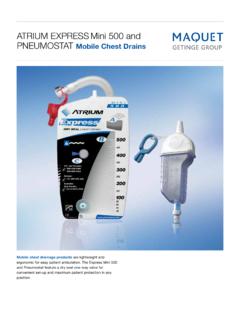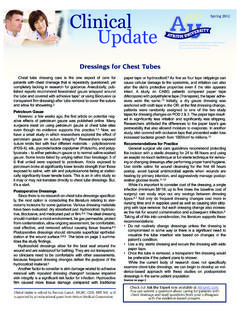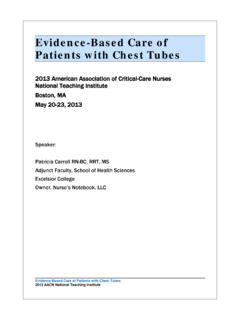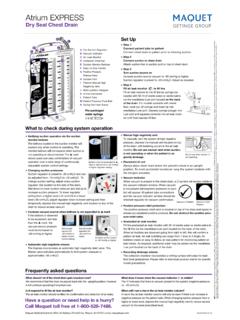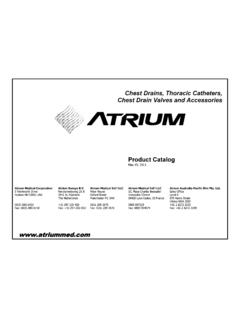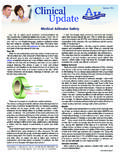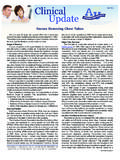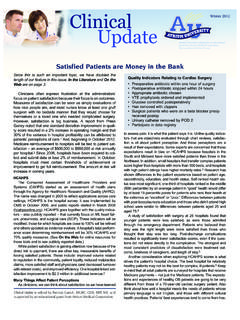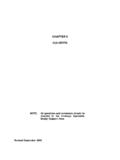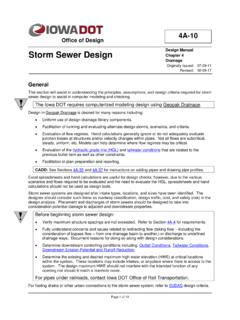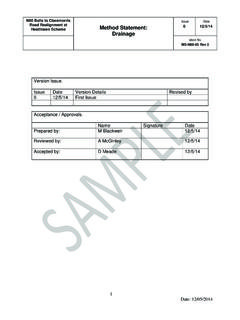Transcription of Managing Chest Drainage - Atrium Med
1 Managing Chest Drainage Managing Chest Drainage A self-paced learning activity provided through an unrestricted education grant from Atrium Medical Corporation A. Managing Chest Drainage Self-Paced Learning Activity Purpose This continuing education activity is designed to enhance nurses' knowledge of proper nursing care for patients with Chest tubes. Learning Objectives At the completion of this self-study activity, the learner should be able to . 1. describe the normal anatomy of the Chest 2. explain the changes that occur in the thoracic cavity during breathing 3. identify abnormal conditions requiring the use of Chest Drainage 4. discuss the features of the traditional three-bottle Chest Drainage system 5. compare and contrast the traditional three-bottle Chest Drainage system with the self-contained disposable Chest Drainage units available today 6. recognize the steps in setting up a Chest drain system 7. outline key aspects of caring for a patient requiring Chest Drainage 8.
2 Recognize four signs a Chest tube can be removed 9. summarize the use of autotransfusion with Chest drain systems What are your personal objectives for this self-study education activity? Successful Completion To receive a certificate of completion for this activity, participants must fill out an online registration, and successfully complete the online post-test with a minimum score of 70% . The online portion of this activity is available at Recommended Instructions for Use Review the purpose and learning objectives above and compare them with your personal learning needs. Preview this self-study monograph. Note the headings, illustrations, and the highlighted information. Read the monograph. Highlight areas of special interest to you or those that you would like to follow-up. Take notes as you wish. Use the glossary to define terms that may be unfamiliar to you. Glossary terms are in bold type in the text the first time the term is used.
3 I After reading the monograph, complete the post-test online at If you do not answer a question correctly, the answer feedback will direct you to the section of the monograph that discusses that topic to facilitate your review. If you require additional information or clarification after completing the activity, you may refer to the suggested readings, consult with an expert nurse, or e-mail the author at After passing the post-test, you will be able to print your certificate of completion. Author This self-paced learning activity was prepared by: Patricia Carroll RN-BC, MS, CEN, RRT. Owner, Nurse's Notebook, LLC. Meriden, CT. Adjunct Professor, Excelsior College Albany, NY. She is solely responsible for the content presented herein. Disclosures Ms. Carroll designs educational programs and materials for Atrium Medical Corporation as a consultant. This educational activity is supported by an unrestricted educational grant from Atrium Medical Corporation.
4 Reviewers We would like to thank these nurses for their planning and review of this continuing education activity: Emily Cannon RN, MSN. Indiana State University Terre Haute, IN. Disclosure: None Diane Surprenant RN. Specialty Infusion Nurse Accredo Health Group Burlington, MA. Disclosure: None ii Table Of Contents Page Anatomy Of The Chest ..1. The Thorax ..1. The Mediastinum ..1. The Lungs And Lung Cavities ..2. Respiratory Physiology ..3. Pathophysiology ..4. Pneumothorax ..5. Tension Pneumothorax ..6. Hemothorax ..7. Cardiac Tamponade ..8. Chest Drainage Systems ..10. Chest Tubes ..11. Patient Tubing ..12. Reusable Chest Drainage Systems ..13. One-Bottle Chest Drainage System ..13. Two-Bottle Chest Drainage System ..14. Three-Bottle Chest Drainage System ..14. Suction Control Bottle ..15. Drawbacks Of The Three-Bottle System ..15. Disposable Chest Drainage Systems ..16. Collection Chamber ..16. Water Seal Chamber.
5 17. Dry Seal Chest Drains ..17. Suction Control Chamber ..18. Double Collection Chest Drains ..19. Infant Chest Drainage Systems ..19. Closed Wound Reservoirs ..19. Setting Up A Chest Drain ..20. Thoracostomy ..20. Steps For Chest Tube Insertion and Drain Setup ..21. Caring For Patients Requiring Chest Drainage ..23. Respirations ..23. Knowledge Level ..23. Pain Control ..23. Vital Signs ..23. Patient Position / Movement ..23. Chest Tube Site / Dressing ..25. Tubing ..25. Drainage Fluid ..26. Water Seal ..26. Suction ..27 iii Disconnecting The Chest Drainage Unit ..29. Removing The Chest Tube ..30. Autotransfusion ..31. The Future is Now: Mobile Chest Drains ..32. Summary ..34. Glossary ..35. Suggested Readings ..38. Classic References ..45. Suggested Readings Regarding Chest Tube Stripping ..46. iv Anatomy Of The Chest The Thorax The thorax lies between the neck and the abdomen. The walls of the thoracic cavity are made up of the ribs laterally, the sternum anteriorly, and the thoracic vertebrae posteriorly.
6 Internal and external intercostal muscles cover bony tho- racic structures. The dome-shaped, muscular diaphragm forms the lower boundary (sometimes called the floor) of the thoracic cavity. See Figure 1 for key anatomical structures of the Chest . The thoracic cavity forms a semi-rigid framework that protects the heart, lungs, great vessels, the thymus gland and parts of the trachea and esophagus. In addition, the structure forms an airtight bellows mechanism (which will be described in more detail in the next section), creating a vacuum system that expands the lungs during inspiration. The thorax is divided into three distinct spaces: The centrally located mediastinum The right lung cavity The left lung cavity Trachea Chest Wall Left Lung Cavity Right Lung Cavity Diaphragm Figure 1. Anatomy Of The Chest The Mediastinum The mediastinum is a flexible partition in the center of the thoracic cavity. The left and right lung (pleural) cavities are lateral to the mediastinum, the sternum is anterior, and the vertebral column is posterior.
7 The mediastinum contains the heart, covered by the pericardium; the thymus gland; parts of the esophagus and tra- chea; and a network of nerves and blood vessels. 1. The Lungs And Lung Cavities The cone-shaped, spongy, elastic lungs are suspended from the trachea and fill a substantial portion of the thoracic cavity. The left lung is narrower, longer and smaller than the right (because of the position of the heart toward the left of midline); it is divided into two lobes: the upper and lower lobes. The larger right lung is divided into three lobes: upper, middle and lower. Air is drawn into the thoracic cavity through the upper airway. The trachea divides into two primary bronchi (one bronchus to each lung), which in turn divide many times into smaller and smaller airways that eventually terminate in the alveoli, where gas exchange takes place across the alveolar-capillary membrane. The boundaries of each airtight lung cavity consist of the Chest wall, the diaphragm and the mediastinum.
8 This cavity is lined with a membrane called the parietal pleura. A similar membrane called the pulmonary or visceral pleura cov- ers the surface of each lung. Figure 2. The membrane lining the Chest wall (L) and covering the lungs (R). A thin film of serous lubricating fluid called pleural fluid separates the parietal and visceral pleural surfaces. This fluid allows the moist pleural membranes to adhere to one another while allowing them to slide smoothly as the lung expands and recoils during inhalation and exhalation. The amount of fluid produced in 24 hours is about of body weight or about 25mL. The lungs have a natural tendency to collapse or recoil. The adherence of the pleurae keeps the lungs pulled up against the inside of the Chest wall, counterbalancing the natural recoil. This tendency for the lungs to pull away from the Chest wall results in a subatmospheric, or negative, pressure in the tiny space between the pleurae.
9 Normally, this intrapleur- al pressure is approximately -8cmH2O during inspiration and -4cmH2O during expiration. This negative pressure keeps the lungs expanded and allows them to move in tandem with the rib cage and diaphragm during inspiration. 2. Respiratory Physiology Normal breathing consists of: Ventilation: the mechanical act of moving air into and out of the lungs Respiration: gas exchange across the alveolar-capillary membrane During normal ventilation, air moves in and out of the thoracic cavity through the trachea by the following process (See Figure 3): 1. During inspiration, the phrenic nerve stimulates the diaphragm to contract, causing it to move downward. At the same time, the external intercostal muscles may also contract, pulling the Chest wall out. Both actions increase the size of the thoracic cavity. 2. Because of the adherence of the pleurae, as the thoracic cavity enlarges, the lungs expand as well.
10 3. As the volume of the lung increases, the pressure within decreases. (This is according to Boyle's gas law, which states there is an inverse relationship between volume and pressure.) This creates a negative intrapulmonary pressure. 4. Air naturally moves from areas of higher pressure to areas of lower pressure. Thus, air will be drawn into the lungs through the trachea when intrapulmonary pressure becomes more negative. 5. During exhalation, the muscles of the diaphragm and intercostals relax. The Chest wall moves in, and the lung volume decreases through natural elastic recoil. 6. As lung volume decreases, intrapulmonary pressure rises in relation to atmospheric pressure (again, by Boyle's gas law). 7. Air now flows from the lung out through the trachea. 8. The cycle then repeats approximately 25,920 times a day. Figure 3. The mechanics of breathing 3. Pathophysiology If air, fluid, or blood enters the tiny space between the parietal and the visceral pleurae, the negative pressure that keeps the pleurae adherent and holds the lungs against the Chest wall will be disrupted.


